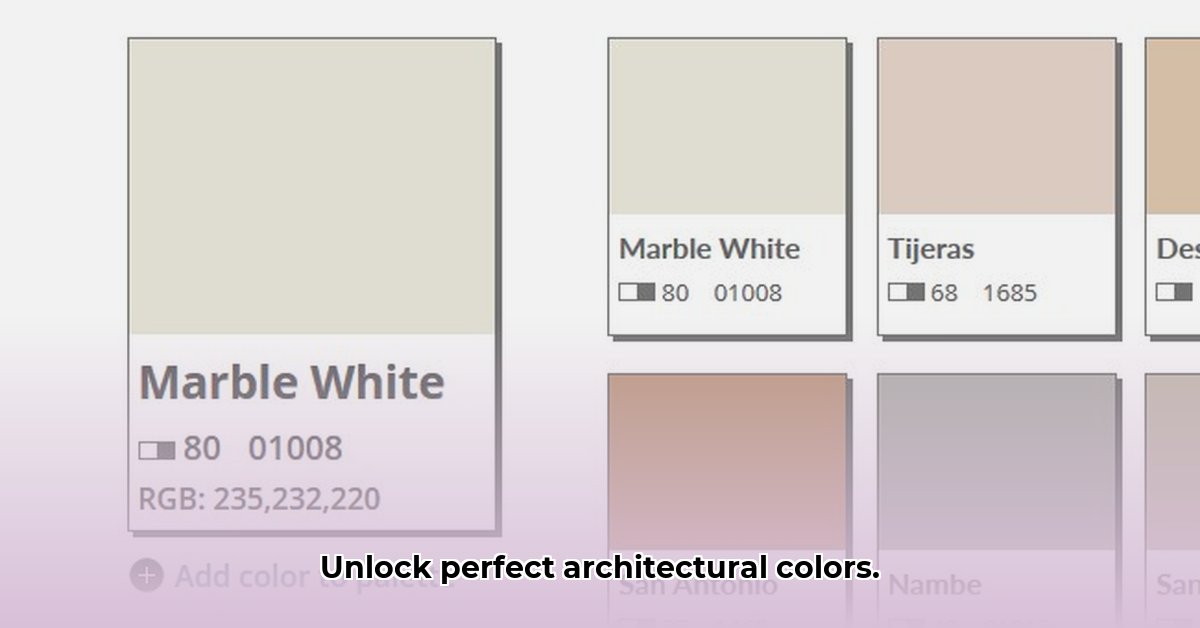
Choosing the right color for your building project is crucial. Incorrect color selection can lead to costly rework and aesthetic dissatisfaction. Sto color systems offer a broad palette, but require careful planning and execution to ensure consistent and accurate results. This guide provides a practical approach to using Sto Color systems, minimizing risks and maximizing the chances of achieving the desired aesthetic outcome.
Understanding Sto Color Systems
Sto offers several color systems, including StoColor and StoColor Classic. Each system is organized differently, requiring familiarity with its specific navigation and color organization. Familiarize yourself with Sto's digital and physical resources, including high-quality color charts and large, easily viewed color swatches. These resources are essential for pre-selection and ensuring accuracy. (See StoCorp's website for digital resources).
Best Practices for Color Selection: A Step-by-Step Guide
Selecting the perfect color involves more than browsing swatches. This section outlines a proven step-by-step approach to minimize color discrepancies and avoid costly mistakes.
Step 1: The Power of Sample Testing: Always request physical samples before finalizing your color choice. Review these samples under various lighting conditions – morning sun, afternoon shade, and different types of artificial light (incandescent, fluorescent, LED). Lighting significantly impacts color perception. Does the color hold its intended hue across these variable light sources?
Step 2: Realistic Mock-Ups: Seeing is Believing: Creating full-scale mock-ups is critical for visualizing the final product. This allows you to accurately assess how the chosen color interacts with existing building materials and the surrounding environment. How does the color appear in a large area compared to a small swatch?
Step 3: Understanding Light Reflectance Value (LRV): LRV measures how much light a color reflects. Higher LRVs generally mean more light reflection, potentially leading to energy savings by reducing cooling loads. Always verify the measurement standards used to ensure consistent interpretation. What is the LRV of your chosen color, and what are its energy implications?
Step 4: Substrate Preparation: The Unsung Hero: Proper surface preparation is crucial for consistent color application. A clean, smooth surface ensures even color distribution and prevents inconsistencies. Neglecting this step can lead to uneven color application, regardless of color selection. How will you ensure your substrate is adequately prepared for optimal adhesion and color uniformity?
Application and Maintenance: Ensuring Longevity and Vibrancy
Proper application and maintenance are essential for preserving the color's vibrancy.
Application: Follow Sto's application guidelines precisely. Using the correct tools, techniques and ensuring proper drying conditions contributes to a professional aesthetic result. Have you considered the specific application instructions for your chosen Sto product?
Maintenance: Regular maintenance protects your investment and extends the life of the finish. Adherence to Sto’s cleaning and protective maintenance recommendations is crucial for longevity. What are Sto's recommended maintenance practices for your specific color and application?
Risk Mitigation and Liability: A Proactive Approach
Even with careful planning, risks remain. This section outlines potential risks and mitigation strategies.
Risk Mitigation Table:
| Risk Category | Likelihood | Impact | Mitigation Strategy |
|---|---|---|---|
| Color Discrepancy | High | High | Extensive sampling, mock-ups, detailed specifications, careful lighting considerations |
| Application Errors | Medium | High | Proper applicator training, meticulous quality control |
| Substrate Issues | Low | High | Thorough pre-application testing, meticulous preparation |
| Fading/Weathering | Medium | Medium | Selection of colors with higher LRV and UV resistance |
Understand Sto's liability disclaimer. While Sto ensures product quality, they are typically not liable for issues stemming from improper application or inadequate substrate preparation. Have you reviewed Sto's warranty to understand the limitations of their liability?
Conclusion: Achieving Color Perfection
Success with Sto color systems requires thorough planning, meticulous execution and understanding of influencing factors. Proactive planning minimizes risk and ensures a professional, aesthetically pleasing, and long-lasting result. Your commitment to detail yields a flawless finish.